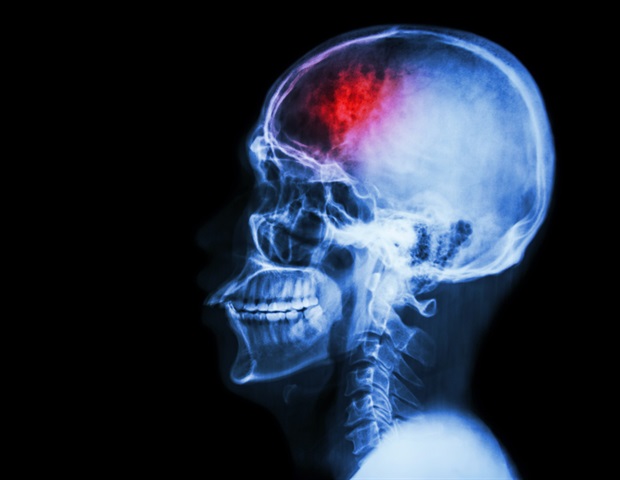The University of Glasgow’s Sir Graham Teasdale, co-creator of the Glasgow Coma Scale, once again has teamed with Paul M. Brennan and Gordon D. Murray of the University of Edinburgh.
The object: to create a simple and practical tool for use in assessing impaired consciousness in the clinical setting when the verbal component of the Glasgow Coma Scale is missing.
The resulting tool and evaluation of its functionality are described and evaluated in the paper, “A practical method for dealing with missing Glasgow Coma Scale verbal component scores,” published today in the Journal of Neurosurgery.
Background
The Glasgow Coma Scale (GCS) was first introduced in 1974 by Bryan Jennett and Graham Teasdale to assess coma and impaired consciousness in patients who have suffered head injury or other acute brain damage.
The scale is used to describe variations in three clinical features: the patient’s eye, motor, and verbal responses. The authors assigned numerical scores to each feature depending on the quality of the response. GCS sum scores (including eye + motor + verbal responses) range from 3 (deep coma) to 15 (full consciousness).
The GCS is used in clinics worldwide by physicians, nurses, and emergency medical technicians; it is also applied widely as a component of many, more complex systems that are used in assessing acute brain damage, such as the Revised Trauma Score, Trauma and Injury Severity Score, and World Federation of Neurosurgical Societies Subarachnoid Hemorrhage Scale.
Unfortunately, there are times when all three clinical features of the GCS cannot be determined. Most commonly, it is the verbal response that cannot be tested. Patients with severe brain injury are often intubated, rendering it impossible to determine a verbal response.
Without data on a patient’s verbal response, one cannot calculate an actual GCS sum score. This limits application of the sum score in the clinical setting and as a component in prediction modelling systems.
The present study
The authors of the present study first examined the frequency and pattern of missing GCS verbal components in a large cohort of patients (11,989) with traumatic brain injury, whose GCS data had been collected in the IMPACT database.
Eye and motor component scores were available for all patients, but verbal scores were missing in 11% of the GCS assessments. Verbal scores were most often missing in patients with low eye and motor scores, that is, in patients with severe brain injury, who may have been intubated at the time of testing.
Using GCS data recorded in a larger database of 54,069 patients, the authors determined the distribution of verbal scores for each combination of eye score and motor score.
Following this, the authors combined GCS eye and motor scores together into unified eye + motor (EM) scores, and then determined the distribution of verbal scores for each EM score. Based on this distribution, the authors identified a single verbal score that could be imputed for each EM score.
To determine how effective these imputed verbal scores could be, the authors examined the effect of substituting imputed verbal scores for actual verbal scores within the framework of GCS-PA CT prognostic charts, which the authors developed a couple of years ago.
These charts take into account the GCS sum score, pupil response, age of the patient, and computed tomography findings of abnormalities. The charts, which provide predictions about patient outcomes, are designed to aid clinical decision-making and communication between clinical teams.
The authors found that the information gained using the simple method of imputing verbal scores according to each EM score was comparable to information based on more complex variations between precise eye and motor scores. The information gained using the simple method was also close to that obtained from full information on verbal, eye, and motor responses.
The authors note that the imputed verbal score does not add new information but does permit the use of prediction and prognostic models, by filling in verbal data to enable those systems to work. In particular, the authors believe that this simple method of adding verbal scores will help clinicians quickly determine the severity of acute brain injury and estimate patient outcomes.
This paper extends our recent work (the GCS-Pupils score and GCS-PA Charts) refreshing the practical utility of the GCS in providing an index of severity and prognosis across the full spectrum of head injured victims. Our simple, new strategy for imputing missing GCS verbal score will benefit patients with altered consciousness, because clinicians can now easily and confidently determine the GCS sum score when the verbal component is missing, and then use this to calculate disease severity and to predict patient outcome.”
Paul M. Brennan, University of Glasgow
Brennan, P. M., et al. (2020) A practical method for dealing with missing Glasgow Coma Scale verbal component scores. Journal of Neurosurgery. doi.org/10.3171/2020.6.JNS20992.
